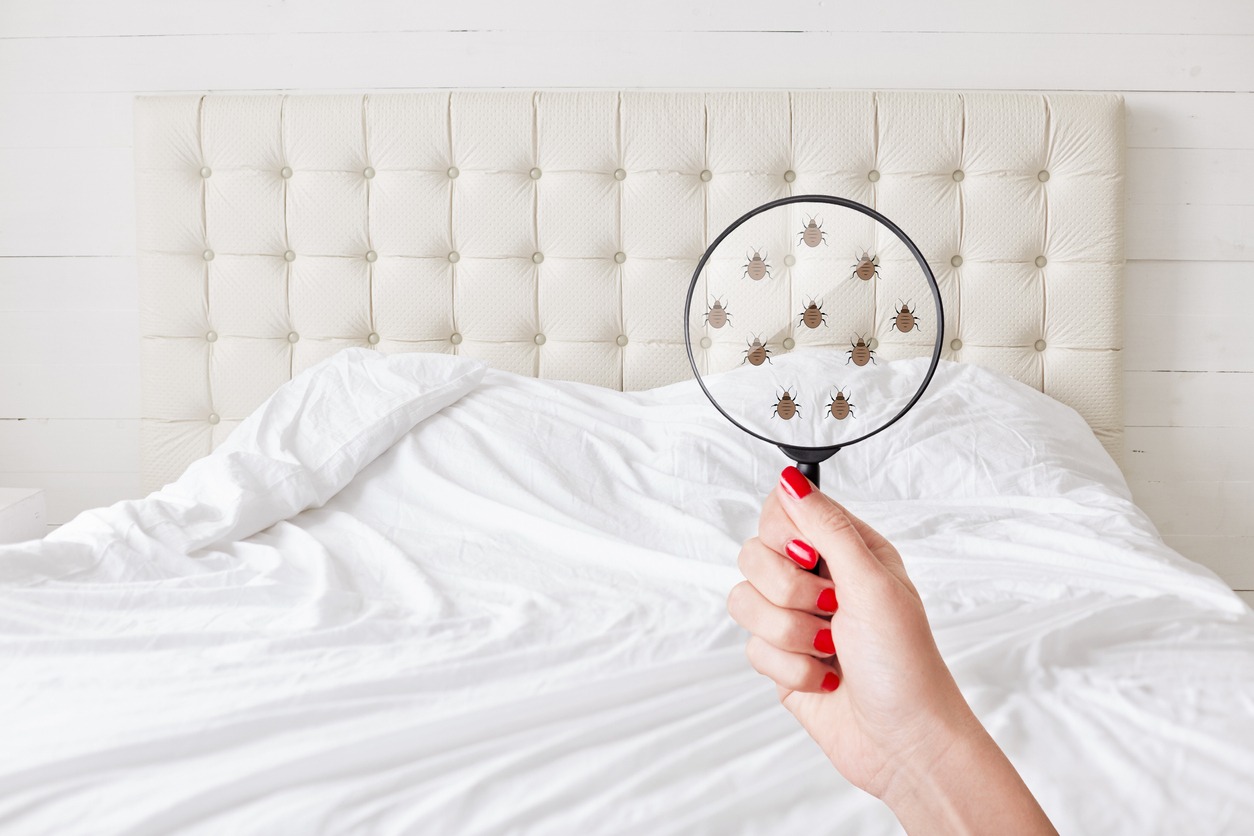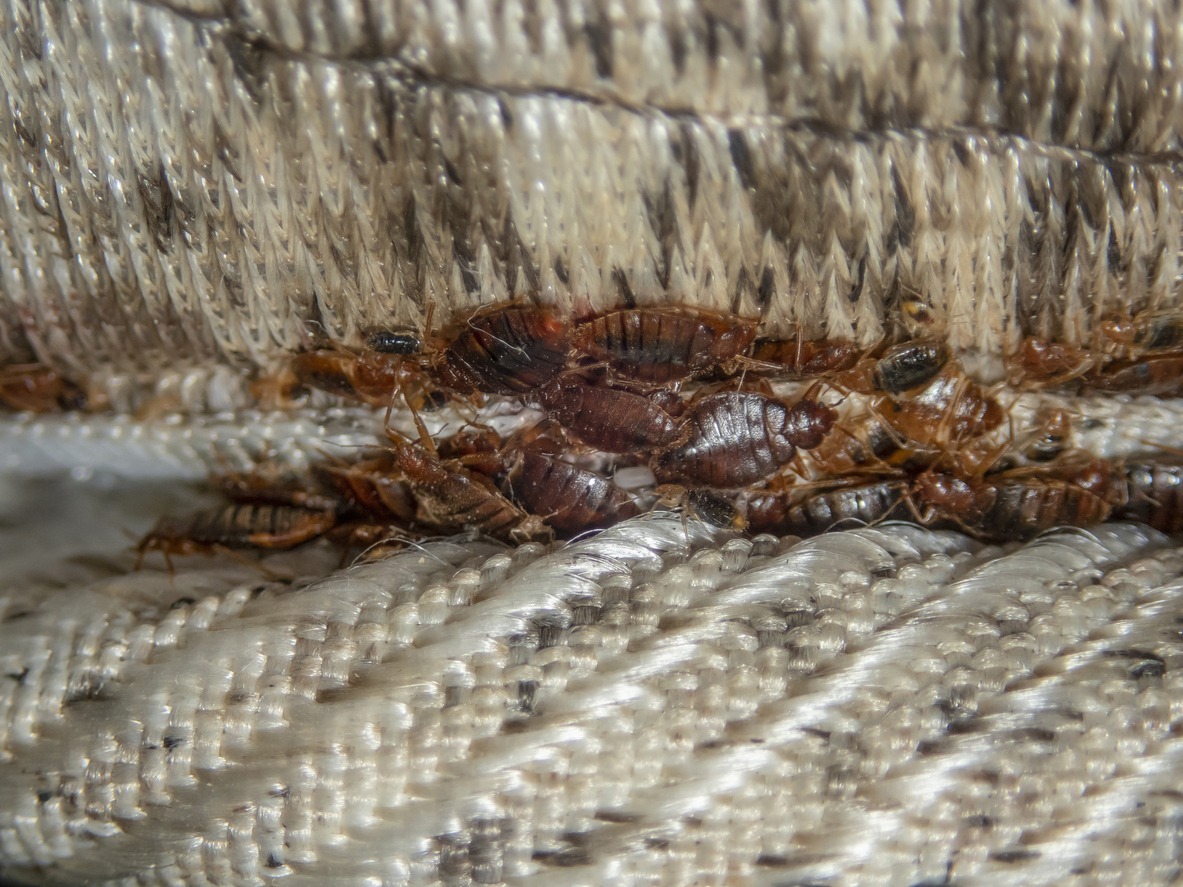Before, the phrase “sleep tight and don’t let the bed bugs bite” was merely a folkloric proverb that parents would use to tuck their kids into bed. In today’s world, it’s more of a warning, and if you’re wondering how to get rid of bed bugs, you might wish it for yourself just before you go to sleep.
Bed bug complaints rose by nearly 25% between 2000 and 2006 alone and bed bug infestations have been steadily increasing since 2004. While the majority of people view bed bugs as primarily an annoyance, their harm goes far beyond the itchy bites they cause and the infested rooms and other areas they take over. In addition to costing thousands of dollars to eradicate, research indicates that bed bug infestations can have detrimental psychological effects both during and after the infestation.
Read on to learn these brilliant strategies to get rid of bed bugs for good, whether you’re concerned about them moving into your home or have already seen one lurking around.
1. Always de-clutter
Keep your home as tidy and clutter-free as you can to reduce your risk of contracting bed bugs or to identify where they are hiding in an area that is infested. Bed bugs will have fewer places to hide in your home if you keep things organized and don’t accumulate piles of laundry, mail, or other junk around them. They’ll also be easier to spot if they do manage to get inside.
2. Cover your pillows and mattress
Get covers for your mattress, box spring, and pillows to make it more difficult for bed bugs to settle in your house. Even if your home does contract a bed bug infestation, these zippered, pillowcase-like protectors could help you keep your expensive bed intact. Just make sure your encasements are completely sealed and that the zippers meet in order to prevent bugs from entering.
3. Dry Your Clothes at a High Temperature
Whenever possible, wash and dry brand-new clothing on high heat before storing it. Bed bugs in your clothing can be killed by the dryer’s high heat, which is much less expensive than fumigating your house.
4. Seal off Your Doors
Even though bed bugs are small enough to squeeze through almost any tiny opening, making sure your doors are properly sealed can still help keep the pests out, especially if you live in an apartment complex. By removing one point of entry, solid plastic, adhesive-backed draft stoppers for your doors’ bottoms may help keep your house a little safer from these pests.
5. Utilize a bed bug detector
The best way to prevent a full-blown bed bug infestation is to catch these critters in their early stages in your home. Fortunately, there are numerous bed bug detection kits that you can purchase that will alert you to any pests lurking in your home long before a whole-home detox becomes your only option.
6. Steam Bed Bugs Away
The removal of bed bugs only requires a small amount of steam. In addition to successfully luring bed bugs out of their hiding places, steam can also kill them at high enough temperatures.
7. After a vacation, thoroughly wash your clothing
When you get home from your vacation, be careful not to put the clothes that were just in your hotel closet back into your own one. Hotels are frequently cited as a major source of bed bug transfer. Make sure to put all of your clothes in the dryer on a high heat cycle before putting them away after a trip, and carefully check your suitcase to make sure you haven’t picked up any stowaways.
8. Sprinkle some diatomaceous earth around entry points
Do you think bed bugs can only be eradicated using strong chemicals? Think again. Diatomaceous earth, which can be purchased online or at almost any health food store, was discovered by researchers at the University of Sydney and Westmead Hospital to be an efficient bed bug killer.
9. Vacuum your space regularly
Vacuuming can help reduce the number of bed bugs that breed in your home, though it probably won’t be enough to completely eradicate a bed bug infestation. Any furniture or areas of your home that you suspect may be home to bed bugs should be vacuumed. Be sure to dispose of the vacuum bag in an outdoor trash can afterward by placing it in two layers of trash bags and sealing each tightly. For bagless vacuums, follow the same procedure to empty it outside, then thoroughly clean the inside. Discard any paper towels you used to clean it outside as well.
10. You should transport your laundry in plastic bags
In order to prevent unintentionally bringing bed bugs into your house, take the following precautions: To avoid these creatures getting into your laundry and hitchhiking home with you, try bringing your laundry to and from the laundromat in a sealed plastic bag, such as a vacuum-sealable storage bag. If you do end up with a bed bug infestation in your home, plastic bags can also help keep your clothing from becoming a place for the pests to make a camp.
11. Bring out the bugs with a hair dryer
Want to lure any bed bugs that may already be in your home out of their hiding places? You could use your hair dryer. Bed bugs may emerge if you use a hair dryer on a low setting and direct the heat toward your baseboards or any other areas where you believe they may be hiding.
12. Use luggage with hard sides
Use hard-sided luggage with overlapping zippers to avoid bringing bed bugs home with you after your trip. Hard-sided luggage makes it more difficult for bed bugs to enter and return home with you, whereas zippers on non-hard sided luggage have a tendency to slightly gape.
13. Invest in a heating chamber
A heating chamber might be able to help you get rid of some bed bugs if you already have them in your house. Before a bed bug infestation becomes a serious problem, these online-purchasable devices can help eliminate bed bugs from contaminated items in your home. They are designed specifically to disrupt the life-cycle of bed bugs.
14. Cover Your Pillows and Mattress
By purchasing encasements for your mattress, box spring, and pillows, you can reduce the likelihood that bed bugs will establish a home in your property. In the event that your home does become infested with bed bugs, these zippered, pillowcase-like protectors may help you keep your expensive bed intact. Simply check that your encasements are impenetrable by looking for holes and that the zippers meet to ensure that no bugs can enter through those areas.
15. Prevention is the key
If you have bedbugs, you should locate them as soon as possible before they begin to multiply. A minor infestation is significantly simpler and less expensive to treat than a large one. Smaller infestations, however, may be more difficult to find. You can perform a DIY bed insect inspection or contact a professional to conduct one. Some inspectors use trained dogs with specialized noses to find bedbugs. Bedbugs can fit into tight spaces like the folds of curtains and the seams of a mattress or couch because to their thin and narrow bodies.
Additionally, keep an eye out for them: close to the mattress and box spring tags, the headboard and bed frame both have cracks, around baseboard, between pillows on a couch, joints in furniture, electrical outlets inside, beneath flimsy wallpaper, or below pictures and posters.


